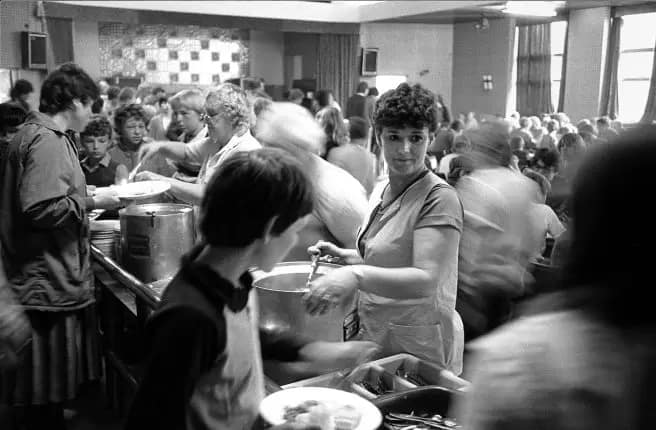A scab is the external remains of damage caused; a visible reminder of a hurt inflicted. It fades away — sooner sometimes, later others —depending on the amount of flesh and skin you’ve lost but sometimes, the scar left behind is still visible. Similarly, a scab, someone who crosses a picket line is “a visible reminder of a hurt inflicted”.

The 1984 miners’ strike divided the country. Of course it did, that was always the plan: by the Tory government, by Thatcher and by her vulture cronies, inc. MacGregor at the Coal Board. They saw the NUM as the strongest of opponents in their ideological rush to remove any trace of “society” from, well, society and, along with her bosom buddy Reagan, their associated drive to sell-off everything to the highest bidder, remove any and all hindrances to the on rushing capitalist tidal wave, and unleashed the neo-liberal “greed is good” wolves, that since then haven’t stopped tearing chunks out of both the body politic and out of the poor communities all around the world.
There’s a thought experiment that asks, “if you had a time-machine, would you go back and stop Hitler’s parents ever meeting?”. Mine has always been, “how much kinder, more equal, more united, would the whole world have been, had Thatcher been throttled at birth?”
The subsequent attempt, for the much of the next year to starve the striking miners, also divided the country. She didn’t want them to go back to work, not many of them anyway. No, this was simply another way to divide and conquer. And that division, like acid on cloth, ate away at the fabric and the heart of all the mining villages and towns, places that until then had been pretty much united. Scabbing sons, fathers, brothers, all were beyond the pale now. Even 25 years after the strike had been smashed, the palimpsest of NUM supporting and anti-scab graffiti was still visible on walls of houses coming into Walmer, in Kent. When the strike ended, exhausted, pushed into near bankruptcy, the courts resolutely against the union, only the Yorkshire and Kent regions voted against ending the strike and carried in picketing their own and other pits for more weeks. But in the end, even they were shut down.
Around Deal and the associated village pits, Betteshanger, Snowdown, Tilmanstone, a support network rapidly came into being. Prompted by the actions of the Women Against Pit Closures groups, miner’s families and people in the works and villages organised collections outside supermarkets, ran communal kitchens, offered benefit concerts where the collection tin came round and other activities. It had been a long time coming, and too late for these mining communities but finally, feminist ideas weren’t being dismissed or disparaged so much anymore.
I was working full-time by the time the Kent miners were on strike; we got large numbers of hot meals out to them via the local women’s groups & allied unions. Local caffs & takeaways also regularly helped. The poorest people in society, putting hand into pocket and supporting the strikes. That we’re still having to do this self-same shit, 40 years later…
This piece in Vittles magazine brought a few tears of recognition to my eyes.
“Offering strikers a hot meal was a convenient social cue that got teachers together … it gave them the space to realise that they all shared a common struggle.”
Food as community, communities uniting around and being supported by food.
You should subscribe and read this piece. It’s — as always in Vittles — fine, fine writing.